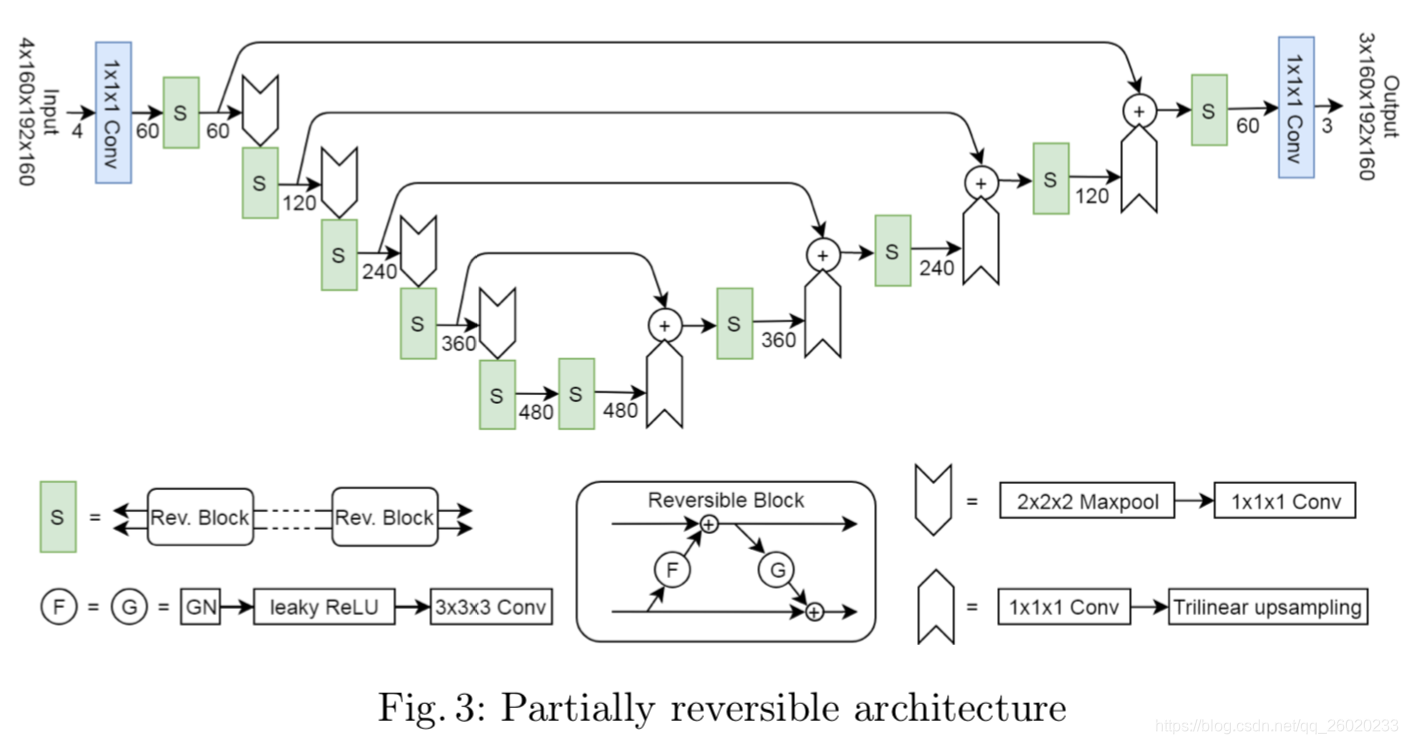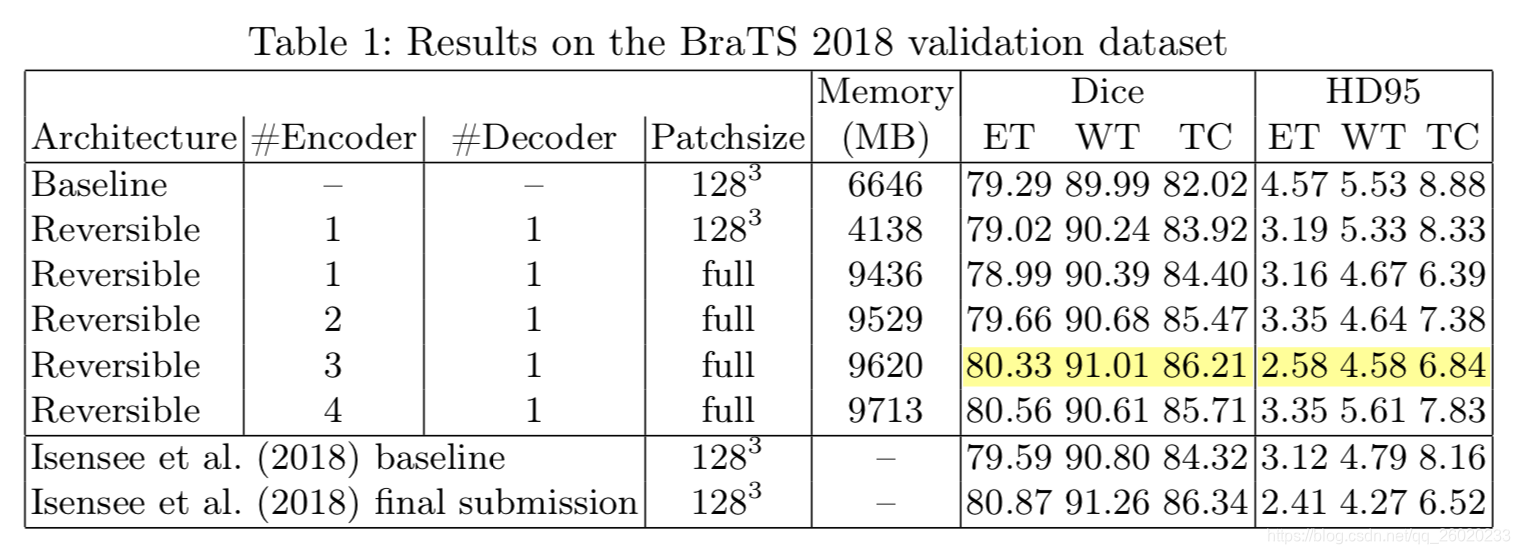作者信息:
Robin Brügger, CV Lab,ETH Zürich
代码:https://github.com/RobinBruegger/RevTorch
https://github.com/RobinBruegger/PartiallyReversibleUnet
医疗影像常用3D网络,显存占用经常制约了网络结构与深度,从而对最终精度产生影响。文章主要借鉴了reversible block 的思路来解决上述问题。
reversible block
该block设计很巧妙。输入x 按通道数先分成两组,x1, x2。利用如下公式(1),得到y1,y2,由于特殊的结构设计,x1,x2反过来又可以由公式(2) 通过y1,y2计算得到。



网络训练时显存占用很大一部分是储存前向传播的中间结果(因为反向传播时需要用到),使用 reversible block 后,中间结果无需保存,只要保存最后输出的结果,中间结果都可以反推得到。

Method
文章基于MICCAI Brats18挑战赛第二名 No-New-Net 的结构进行改进,引入reversible block后的网络结构如下:

Results
结果很好,第一二行比较可以看到使用reversible block后,显存节约2.5G,使得在12G显存下使用full volume 训练成为可能,与No-New-Net的单模型比也要强。

代码
reversible block模块部分的代码如下,反向传播的代码花了一定时间才大致了解。f.backward(dy) 是链式法则的意思:把f.backward()得到的梯度乘上之前层反传得到的梯度dy,可以参考这个资料
import torch
import torch.nn as nn
#import torch.autograd.function as func
class ReversibleBlock(nn.Module):
'''
Elementary building block for building (partially) reversible architectures
Implementation of the Reversible block described in the RevNet paper
(https://arxiv.org/abs/1707.04585). Must be used inside a :class:`revtorch.ReversibleSequence`
for autograd support.
Arguments:
f_block (nn.Module): arbitrary subnetwork whos output shape is equal to its input shape
g_block (nn.Module): arbitrary subnetwork whos output shape is equal to its input shape
'''








 本文介绍了如何应用可逆块来解决3D医学图像分割中内存效率低下的问题。作者基于No-New-Net结构改进,创建了一个部分可逆U-Net,在节省2.5GB显存的同时,提高了12GB显存设备上的全体积训练能力。实验证明,这种方法在性能上优于No-New-Net单模型。
本文介绍了如何应用可逆块来解决3D医学图像分割中内存效率低下的问题。作者基于No-New-Net结构改进,创建了一个部分可逆U-Net,在节省2.5GB显存的同时,提高了12GB显存设备上的全体积训练能力。实验证明,这种方法在性能上优于No-New-Net单模型。
 最低0.47元/天 解锁文章
最低0.47元/天 解锁文章
















 1549
1549

 被折叠的 条评论
为什么被折叠?
被折叠的 条评论
为什么被折叠?








